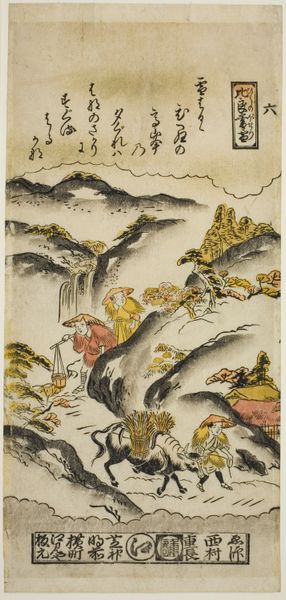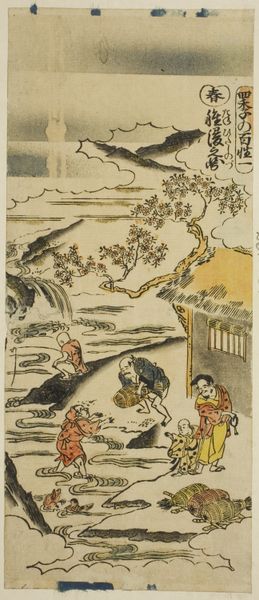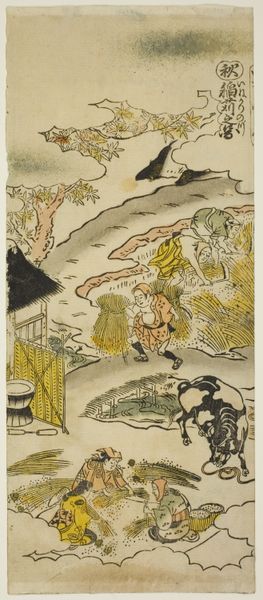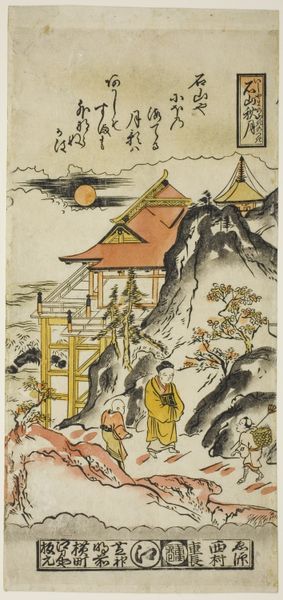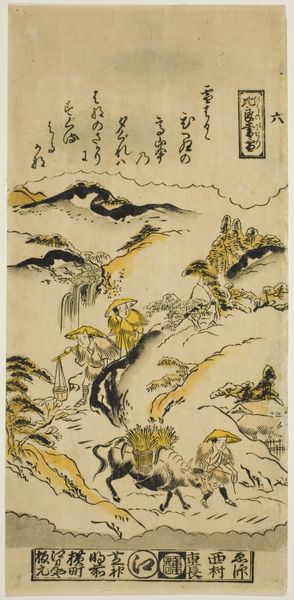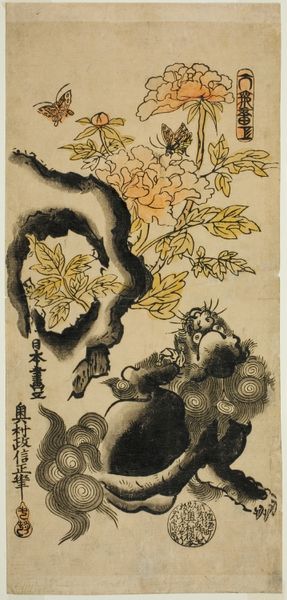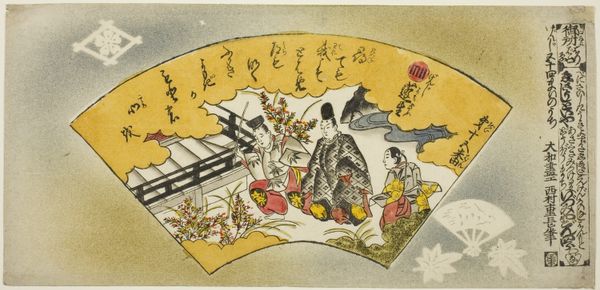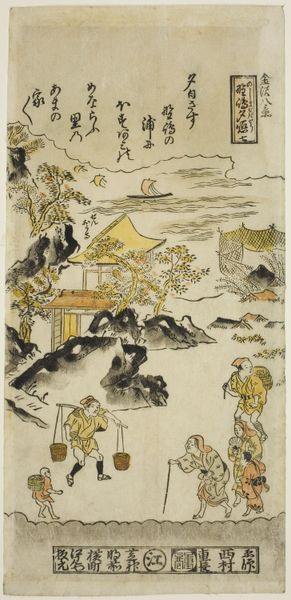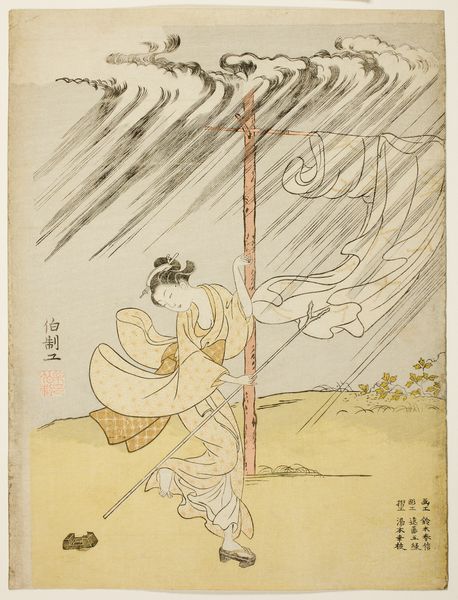
Winter: Storing Rice (Fuyu: kome osame no zu), No. 4 from the series "The Four Seasons of Farmers (Shiki no hyakusho)" c. 1730s
0:00
0:00
print, woodblock-print
#
ink painting
# print
#
asian-art
#
landscape
#
ukiyo-e
#
woodblock-print
#
genre-painting
Dimensions: 12 1/8 × 5 1/8 in.
Copyright: Public Domain
Editor: This is "Winter: Storing Rice," a woodblock print by Torii Kiyomasu II from around the 1730s. It feels bustling, almost frantic, despite being a winter scene. What do you see in this piece beyond just a seasonal snapshot? Curator: I see a snapshot of socio-economic structures embedded within the landscape. Kiyomasu's "Winter: Storing Rice" presents labor not as an isolated activity, but as integral to the community’s survival. This portrayal goes beyond aesthetics; it touches upon the economic and social dynamics of 18th-century Japan. Do you notice the hierarchy represented in the print? Editor: You mean the figures carrying heavy loads versus the ones seemingly directing them? There’s definitely a sense of unequal labor being depicted. Curator: Exactly. The figures working on the rice storage might be lower-status individuals or tenant farmers. We can also consider gendered roles—who seems to be doing what kind of work? The positioning and action of each figure contribute to a narrative of societal roles and obligations, questioning the fairness and impact of these arrangements. How does viewing it through this lens change your initial impression? Editor: It definitely makes it less picturesque and more of a critical commentary, or at least a record, of the working class and the economic structure of the time. The 'bustling' quality now seems more like forced urgency. Curator: Precisely! And this perspective urges us to reflect on labor exploitation and social stratification, connecting historical narratives with ongoing conversations about economic equality. Art, in this context, serves as a powerful dialogue across centuries. Editor: I see the print now as less of a genre scene and more of an explicit political statement. Thanks, this was really insightful!
Comments
No comments
Be the first to comment and join the conversation on the ultimate creative platform.
